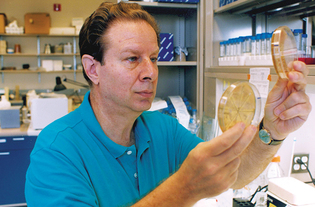
Courtesy Yale University
Sidney Altman was a Sterling Professor and a former dean of Yale College.
View full image
When Sidney Altman arrived at MIT in 1956, he was struck by the light-hearted arrogance of everyone around him. His fellow students’ brilliance was matched by their self-confidence—a feature that enabled them, he recalled, to question everything. “One thing you learned at MIT was the feeling that you had to look carefully at everything happening in the world around you . . . and treat it with a certain amount of deliberate hard judgment,” he said in an interview decades later.
That questioning attitude served him well. Altman went on to win a Nobel Prize for discovering previously unknown functions of RNA. A Sterling Professor of Molecular, Cellular, and Developmental Biology (MCDB) at Yale, Altman died on April 5 after a long illness. He was 82 years old.
Altman, born in 1939 in Montreal, was the son of a textile mill worker and a grocer who had immigrated from Eastern Europe. Sending their son to the United States to college was a significant financial decision for the family, but Altman thrived in MIT’s unusual climate, graduating with a degree in physics. After leaving a PhD program at Columbia out of frustration with its lack of opportunities for research, Altman went to the University of Colorado, where he worked with DNA research pioneer Leonard Lerman as a PhD student in molecular biology.
As a young scientist, not long out of graduate school, Altman worked at the Medical Research Council Laboratory of Molecular Biology in Cambridge, England. Two weeks from the end of his funding and worrying about his job prospects, he made a discovery that would change everything. He managed to isolate a precursor of transfer RNA, a piece of cellular machinery involved in the transcription of DNA into proteins. The achievement led to his move to Yale in 1971.
But delving deeper into the world of RNA brought Altman and his colleagues to a controversial conclusion: RNA, which had been thought little more than an inert messenger, was capable of acting as an enzyme. “We were pummeled from every direction” by other scientists, Altman recalled. (In a 2010 interview, he said that the street fights he joined as a child in Montreal prepared him well for a life among scientists.) Ultimately, other researchers confirmed the finding. Altman and Thomas Cech shared the 1989 Nobel Prize in Chemistry for their work showing that RNA can catalyze reactions.
Altman was active at Yale outside the lab, too. He served as chair of the MCDB department from 1983 to 1985, and as dean of Yale College from 1985 to 1989. He was a longtime board member of the Slifka Center for Jewish Life, and he was involved in establishing the Judaic studies program at Yale.
Altman was also an involved mentor to many younger scientists. John Carlson, a professor in MCDB whom Altman hired in 1986, recalls many lunches with him at the Educated Burgher. “‘What’s happening in your lab?’ he wanted to know,” wrote Carlson in a remembrance to be published in the journal RNA. “After a few months I realized that there were three reasons why I needed to design successful experiments: i) to satisfy my curiosity; ii) to assure my academic survival; iii) to have something to tell Sid at the Educated Burgher.”
 loading
loading
1 comment
-

James J. Stark, '67, 11:33am August 05 2022 |  Flag as inappropriate
Flag as inappropriate
The comment period has expired.In the biography of Jennifer Doudna, discoverer of CRISPR, Walter Isaacson credits Altman with providing Doudna with a path for her work. Altman's accomplishments will be felt by the scientific community for decades to come.